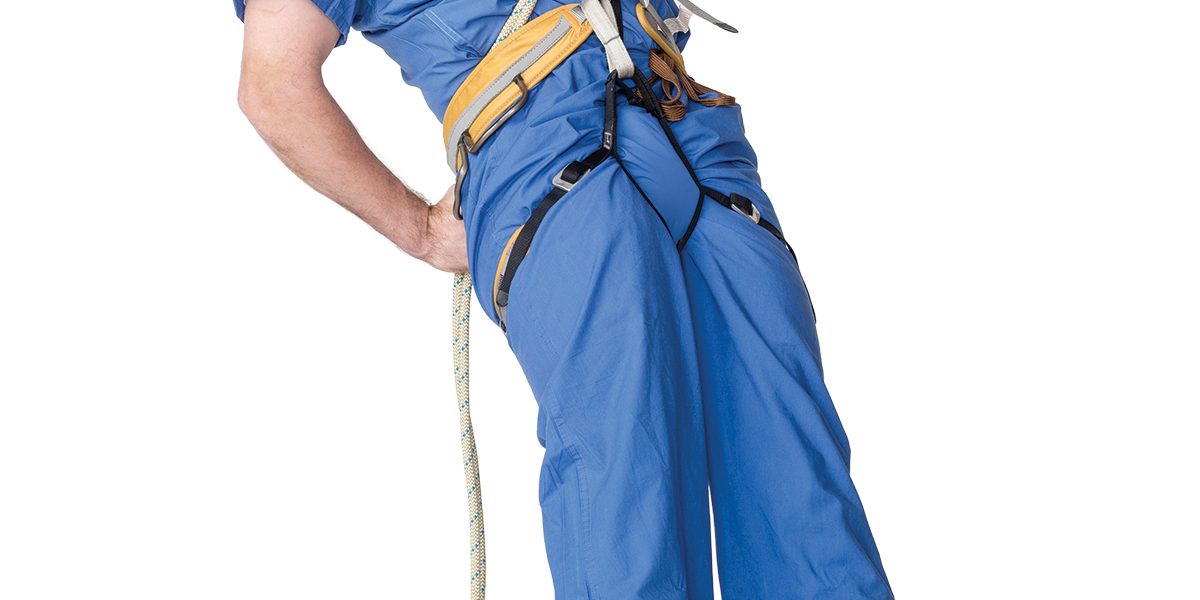Health & Wellness
Cameo: Dr. David B. Leeser
Dr. David B. Leeser, chief of kidney and pancreas transplantation at University of Maryland Medical Center.
Rappel for Kidney Health is an unusual fundraiser. Can you describe it? We rappel off of the Baltimore Marriott Waterfront, and it is a 300-feet descent. The views are spectacular, but the event is not for the faint of heart.
How did you first get involved? I was asked by one of our coordinators to rappel last year and then asked the National Kidney Foundation if they wanted a chair for this year.
How did you get involved with kidney and pancreas transplantation? I was lucky enough to work with a surgeon who trained here at University of Maryland during my residency training and he really got me interested in organ transplant. He was really responsible for my coming to the University of Maryland to do my fellowship and then it went from there.
Why the kidney or the pancreas instead of the heart or the liver? One of the reasons is because we had a bigger kidney program where I trained. The other reason is that I think the patients in kidney transplantation are really spectacular. I think the ability to do living donor transplants is really amazing. We can now take kidneys out by making a small incision around the belly button. We take kidneys out of living donors with one small incision and afterwards you can almost not even tell that someone gave a kidney. I’ve always liked everything associated with taking care of patients with kidney disease. I’m very plugged in to the nephrology community, so that allows me to really create a seamless care situation for my patients.
So how much need is there for kidney transplant research compared to other organ transplants? Well, I think, in general, the National Kidney Foundation supports all kinds of research surrounding renal failure, which is a huge problem. If you look at the big problems we deal with on a public health front: We talk about obesity, we talk about hypertension, and we talk about diabetes. So, if you put hypertension and diabetes together, you have a huge risk of developing renal issues and problems with your kidneys. So I think that the National Kidney Foundation supports research in areas like that where you have a big intersection.
Why rappel for kidney health? Why not nap for kidney health? There are two reasons. One is to raise money. The other is, when you hear about people rappelling off a building that’s 32 stories, people go, ‘Wow! What’s that about?’ So it’s a way to put a spotlight on the National Kidney Foundation and the issues that underpin the organization.
You are part of a team, correct? I am part of a University of Maryland team. We were going to have one team; we now have two.
Anyone can participate, so did you recruit some of your colleagues for this team? I did. And some of them said, ‘There’s no way, but I’ll give you money to do it.’
I imagine it’s a tough sell for a lot of people. Some people said, ‘I’m afraid of heights, there’s no way you’re ever going to get me up there.’ And then some people are really interested because it is something they’d never, ever do. One of the nurses I work with, she’s on our team and is going to jump.
Well, no one is actually jumping, right? Well, no. It’s fun to say jump.
Are you generally an adrenaline junkie? Not really. I look at this as very, very safe. It’s funny, my son does rock climbing and he said, ‘Well, you’re on two ropes that both could hold up a VW bug by themselves, you’re pretty darn safe.’ Then again, he’s 18. He probably believes that if he fell, he would bounce.
I know you have a little bit of experience rappelling. Well, I rappelled a little bit when I was in the Army in my late 20s down in San Antonio, TX. That’s a little bit different because you can’t hurt yourself on this one. In the Army, it was very safe, but not quite as foolproof as this system is for the NKF rappel.
